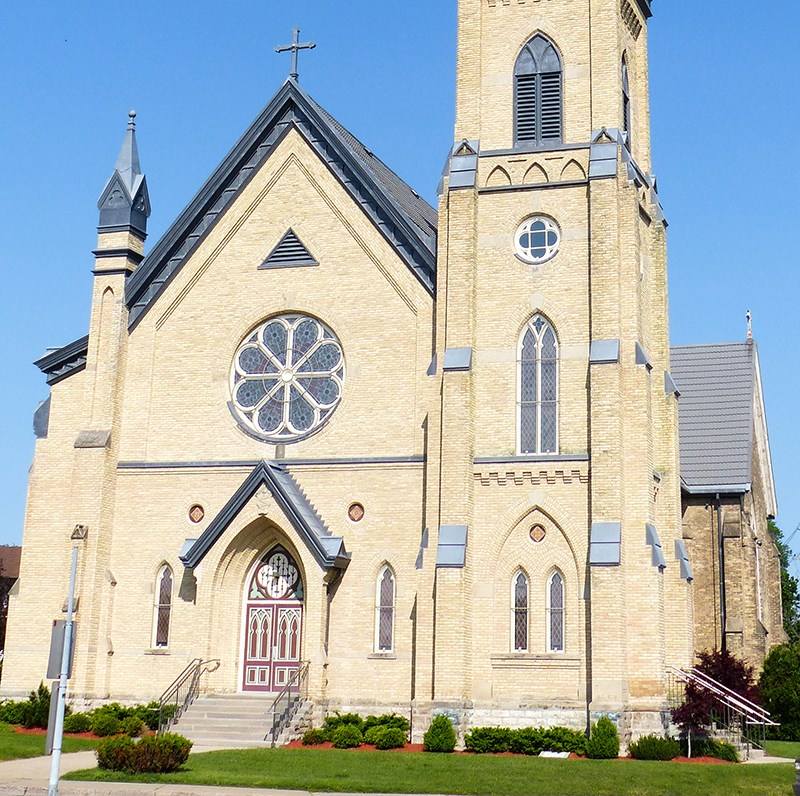George Mathewson
With its graceful spire and 37 stained glass windows, Our Lady of Mercy Church has been one of Sarnia’s finest buildings since its inception 137 years ago.
But to my mind, one of its nicest features is the warm, yellow brick from which the church was built.
Surprisingly, this brick wasn’t imported from some exotic locale. It was made right here in Sarnia, produced at one of several brickyards that started operating near Blackwell in the 1860s.
The industry took root in the vicinity of Telfer Road and the Cull Drain, which was being dug at the time to create new farmland by draining a vast marsh, known as Lake Wawanosh.
Clay was mixed with sand and pressed into moulds and then laid on the ground to harden for three or four days.
These “green” bricks were then stacked 15-feet high in massive kilns and fired with wood cut the previous winter in local bushlots.
According to Charles S. Phelps’ A History of Blackwell Church and Community, 100 Years, the fires were started on Monday morning and, if all went well, the bricks would be done by Friday, allowed to cool and then sold.
Our Lady of Mercy isn’t the only local building made from the distinctive local clay, which came to be known as “Wawanosh” brick.
In fact, if you can look through the years of accumulated soot you soon realize that many brick homes and businesses built before the turn of the 19th century are made of the same honey-coloured brick, although OLM is its poster child thanks to a $1-million cleaning and restoration in 2009.
Other Sarnia churches including St. Andrew’s (1867) and St. George’s (1884) are Wawanosh brick, as is the Bright’s Grove library (1875) and Petrolia town hall (1889).
The Praill farmhouse at Modeland and Blackwell and the Mackenzie House in downtown Sarnia are just two of many, many private homes built with local bricks.
George Telfer, whose family gave the road its name, was one of the clay entrepreneurs. He started his brickyard on the banks of the Cull Drain about a half-mile from his log home, and for decades the operation prospered.
The old Methodist church at Blackwell (1880) provides an example of the brick manufactured by Telfer’s enterprise.
By the 1890, Sarnia’s brickyards were collectively churning out millions of bricks a year. But the industry’s collapse came quickly.
Some historians say the vein of suitable brick-making clay ran out, while others suggest inexpensive concrete blocks and rising labour costs impacted the market.
Evidence of the brickyards is long gone, but the local clay lives on today in some of Sarnia’s most durable and beautiful buildings.
